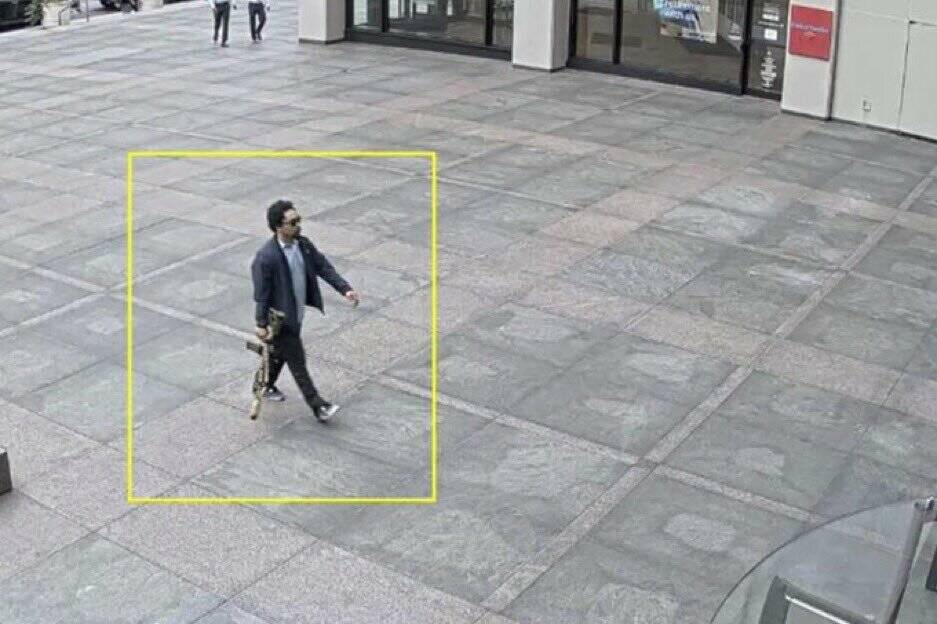Las Vegas gunman in NYC office shooting had CTE, medical examiner rules
A Las Vegas man who killed four people in a July shooting at an office building in Manhattan had Chronic Traumatic Encephalopathy, also known as CTE, according to the New York City Office of the Chief Medical Examiner.
Officials released their findings in a statement on Friday, stating that the department had concluded its neuropathological examination in the case of Shane Tamura.
Tamura, 27, died by suicide after committing the mass shooting at a Park Avenue skyscraper that is home to the headquarters of both the NFL and Blackstone, one of the world’s largest investment firms, as well as other tenants.
Authorities have said that Tamura, who played football at the high school level in Southern California, targeted the NFL, blaming football and the league for his perceived struggle with the neurodegenerative disease.
The New York City Office of the Chief Medical Examiner’s statement, which came two months after the massacre, said “following a thorough assessment and extensive analysis by our neuropathology experts,” it found “unambiguous diagnostic evidence of Chronic Traumatic Encephalopathy” in Tamura’s brain tissue.
The statement noted that “CTE may be found in the brains of decedents with a history of repeated exposure to head trauma.”
The NFL also released a statement responding to the medical examiner’s findings.
“We continue to grieve the senseless loss of lives, and our hearts remain with the victims’ families and our dedicated employees. There is no justification for the horrific acts that took place,” the statement read. “As the medical examiner notes, ‘the science around this condition continues to evolve, and the physical and mental manifestations of CTE remain under study.’”
‘Study my brain’
According to law enforcement, Tamura left behind a suicide note that mentioned a 2013 documentary on CTE and former NFL players who had the disease.
In the note, Tamura wrote, “Study my brain,” according to law enforcement officials.
CTE cannot be confirmed as a diagnosis until after death, when samples of a patient’s brain can be examined for signs such as shrinkage and specific patterns of plaque build-up, researcher Brook Conway Kleven told the Las Vegas Review-Journal in July.
In living people, the condition is referred to as Traumatic Encephalopathy Syndrome (TES), which describes the clinical signs linked to CTE and outlines the diagnostic criteria. According to Kleven, symptoms may include impulsivity and explosive behavior, such as acts of violence.
Professional athletes who have played contact sports, such as football, as well as military members who have seen combat, are at high risk for CTE, Kleven also said.
Tamura gained notoriety as a “standout running back” at high schools in Santa Clarita and the San Fernando Valley.
A statement released by Granada Hills Charter High School, where Tamura attended during the 2015 fall semester, stated that he withdrew from the school, but did not specify the reason. There is no evidence that Tamura played football at the junior college or university level after high school.
Kleven said then that someone with 11 to 14 years of football experience would have a higher risk of CTE, compared to someone who played for only three or four years.
In the press release, the medical examiner noted that its neurogological findings regarding Tamura were consistent with “low-stage CTE,” as defined by current consensus criteria.
If you’re thinking about suicide, or are worried about a friend or loved one, help is available 24/7 by calling or texting the Lifeline network at 988. Live chat is available at 988lifeline.org. Additionally, the Crisis Text Line is a free, national service available 24/7. Text HOME to 741741.
Contact Akiya Dillon at adillon@reviewjournal.com. Staff reporter Mary Hynes also contributed to this report.



















